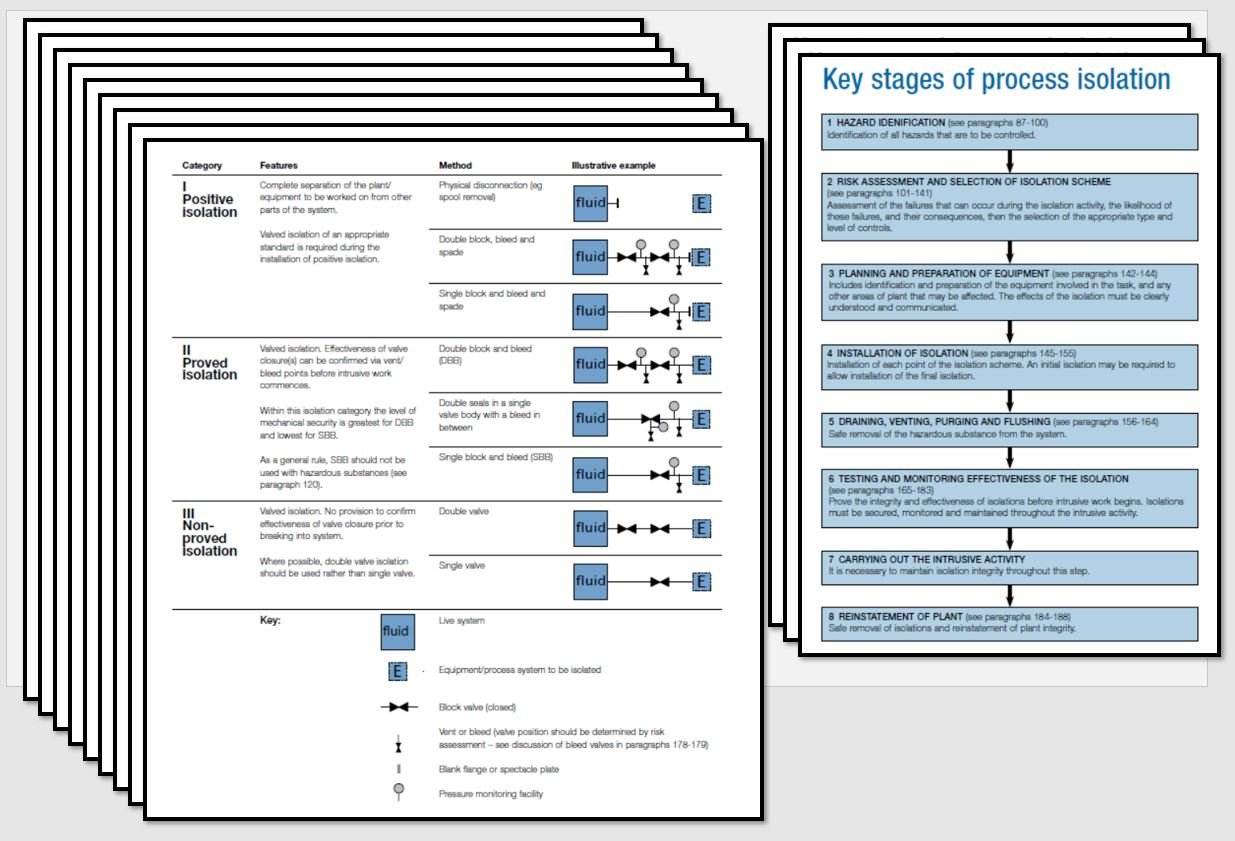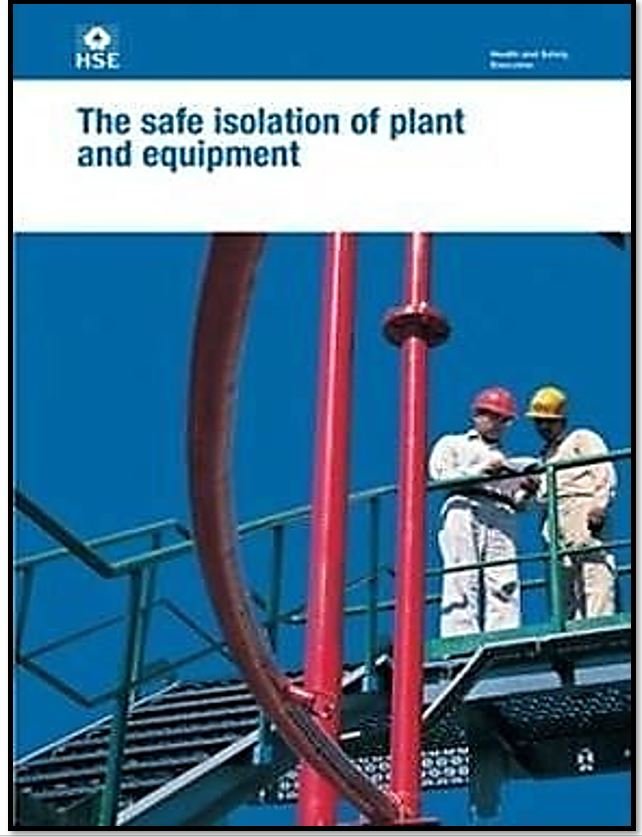E-Books:The safe isolation of plant and equipment
4 min readThis book is a useful reference for duty holders in the onshore and offshore oil and gas industry, chemical manufacturing, and pipelines associated with these industries. It will help duty holders to develop, review and enhance their own isolation standards and procedures. It also has general application to all industries where process isolations are made, and to mobile offshore drilling units where relevant. It provides guidance on how to isolate plant and equipment safely, and how to reduce the risk of releasing hazardous substances during intrusive activities such as maintenance and sampling operations. It includes a methodology for selecting ‘baseline’ process isolation standards and outlines preventive and risk reduction measures.
1 This publication provides guidance on the general principles of safe process isolations. It describes how to isolate plant and equipment safely, and how to reduce the risk of releasing hazardous substances during intrusive activities such as maintenance and sampling operations.
2 It includes a methodology for selecting ‘baseline’ process isolation standards and outlines preventive and mitigatory risk reduction measures. It is intended for use as a reference to assist duty holders to develop, review and enhance their own isolation standards and procedures.
3 The guidance applies to the following industries:
- the onshore and offshore oil and gas industry;
- chemical manufacturing; and
- pipelines associated with these industries.
It also has general application to all industries where process isolations are made, and applies to mobile offshore drilling units where relevant (eg well test facilities, under balanced drilling etc).
4 This guidance is primarily intended for senior operational managers who are responsible for their companies’ isolations systems, and for the health and safety professionals who advise them. It will also be of interest to employee representatives and to anyone who monitors, audits and reviews isolations systems. Organisations responsible for the design and modification of plant should use this guidance to ensure that their designs provide adequate isolation facilities.
5 Key issues for this guidance include:
- the importance of good design (for new plant and for plant modifications);
- the critical role of human factors in preventing loss of containment;
- a revised and recalibrated selection tool;
- plant reinstatement as a critical element of isolation activity;
- guidance on the use of ‘variations’ from company standards;
- advice on controlling own isolations and extended term isolations; and
- the inclusion of medium and low pressure gas distribution networks within the scope of the document.
6 The guidance is intended to reflect industry ‘good practice’ for the design of new plant. It applies to existing plant to the extent that it is reasonably practicable to do so. Any alterations required to reduce risks for existing plant to ‘as low as reasonably practicable’ (see paragraphs 13-16) should be identified and carried out within an appropriate timescale.
7 The primary concern of this guidance is with process isolations eg for intrusive maintenance on live plant. The principles are also relevant for non-intrusive isolations that involve breaking the containment envelope and for controlling longterm process plant configurations. The guidance is not intended for emergency situations where loss of containment has occurred and immediate isolation of inventory is required. It does not apply to non-process plant and equipment (eg powered access equipment used during isolation activities).
8 The main focus is on risks to the safety of people, particularly where activities present potential major accident hazards. Avoiding loss of containment will also improve environmental protection and reduce business interruption. 9 The effectiveness of an isolation system depends on the adequacy of other arrangements, including work control systems (especially permit-to-work), operating procedures, training and competence, management of change and contingency plans. The References and further reading section gives sources of more detailed guidance on such topics.

Contents
Foreword 4
Introduction 5
Scope and target audience 5
Legal considerations 6
Risk reduction and ALARP 6
Overview of isolation hazards 7
Management of isolations 7
Basic principles 7
Design 8
Human factors 10
Roles and responsibilities 12
Training and competence 14
Monitoring, audit and review 15
Setting performance indicators for isolation activities 17
Safe systems of work for isolation activities 17
Work control systems 17
Documentation 17
Controlling interactions with other work/systems 18
Controlling changes 19
Key stages of process isolation 21
Hazard identification 22
Risk assessment and selection of isolation scheme 23
Planning and preparation of equipment 31
Installation of the isolation 32
Draining, venting, purging and flushing 34
Testing and monitoring effectiveness of the isolation 35
Reinstatement of the plant 38
Isolation situations requiring specific considerations 39
Own isolations 39
Arrangements for large-scale isolations 41
Extended isolations 42
Appendices 42
1 Legal requirements 42
2 Non-process isolation hazards 44
3 Checklists for monitoring and review 47
4 Valve types and issues 50
5 Isolation methods 52
6 Example of a selection tool to establish the ‘baseline standard’ for a final isolation 59
7 Pipeline isolation requirements 68
8 Draining, venting, purging and flushing activities 72
9 Isolations for instrument work 75
References and further reading 77
Glossary 79





1 thought on “E-Books:The safe isolation of plant and equipment”